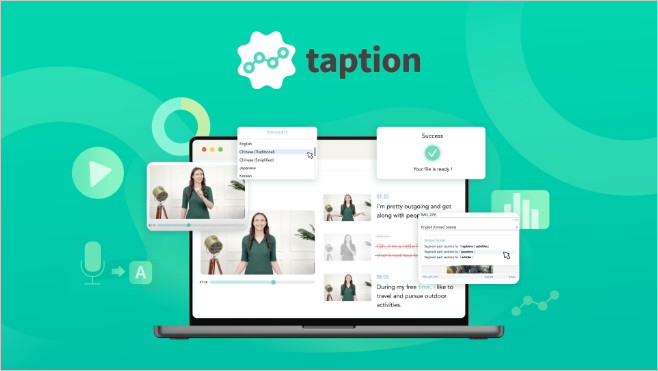Monetizing your streaming content by boosting ad value can be challenging to navigate in a world that is insistent on blocking ads to create a better user experience (UX). However, advertising isn’t the enemy, and as ad campaigns begin to target consumers, ads are more beneficial to users than ever before.
Take a moment to learn how to navigate the basics of outsmarting ad-blockers and connect customers with product and service providers using SSAI and DAI to engage in the best ad stitching practices. It is essential to know a few of the secrets you need to be familiar with to meet your ad revenue goals and significantly boost your advertising value.
What are Server-Side Ad Insertion (SSAI) and Dynamic Ad Insertion (DAI)?
In the past, broadcasting television came from cable and satellite service providers such as Comcast or Charter Communications. Commercials aired for a general audience based solely on the content of the program. Meaning, if you are watching basketball, the ads will be about energy drinks, the latest technology in athletic shoe development, or something targeted towards those who generally watch sports.
However, when the method people in which viewed their programming changed, there came a need for the change in the way companies advertise. People want personalized content, even in their advertising. Therefore, to create a customized viewing experience, you must target your audience.
Today, audiences are captivated by OTT streaming content. Advertisers want to connect with as many potential customers as possible. Marketers get direct feedback from data trackers to learn more about their target demographic. The result is that they can deliver increasingly relevant ads, boosting impressions and engagement. Using this data, you can raise the value of ad space.
The problem that advertisers have with ad-blocking technology is that they have to be more creative in connecting with customers. That is why you need to utilize server-side ad insertion and dynamic ad software when creating streaming content. But what exactly does that mean?
Server-Side Ad Insertion (SSAI)
Server-side ad insertion (SSAI) technology enters customized ads and stitches them neatly into a single stream. Various users view different advertisements even when watching the same content.
Viewers get a constant stream among fast-loading dynamic ads and content. You can do this without buffering or latency. For that reason, SSAI is better known as server-side dynamic ad insertion.
The benefits to developers occur when the ad-blockers cannot differentiate video streaming containing ads from other streaming videos. So you can bypass ad-blocking technology, allowing for an all-inclusive seamless playback.
Dynamic Ad Insertion (DAI)
Dynamic ad insertion (DAI) allows advertisers to customize ads for each user or individual viewer. They receive highly-targeted, individualized offers during live streaming and video-on-demand (VOD) content. An example of this would be the ability to change ads as needed to keep content relevant for the pointed consumer.
The best ways to leverage targeted information is through:
- Geo-localization
- Socio-demographics
- Behavioral profiles per device, content, and user
How Does DAI Work with SSAI?
Stitching together ads and content occurs on the server-side while embedding the code. A manifest manipulator creates spliced streams for its client and their content. They make ad-decision inquiries that display ads and insert them effortlessly into the content while streaming. As part of the video stream, the ads are proxied from the same server and content delivery network (CDN).
Here are the ways this works:
- Streaming video coding: OTT providers feed either live or stored video into a video encoder.
- Timestamp recognition: They recognize the start and end times within the content stream, and cues get inserted at the appropriate points.
- Embedded streaming protocols: Encoders transcode and condition the streams according to the embedded protocol information. SCTE-104 and SCTE-35 are the two industry standards, and developers usually choose one of these two protocols.
- SSAI module detects ad markers: By sending an ad request to the ad-decision server in real-time. This request includes custom data about the user.
- Targeted ad file chunk development: These file chunks are inserted into the video stream and stitched with the content.
- Transparent ad-chunking: Ad-related data is sent to the tracking servers and ad-partners by the user’s media player. Impressions and other information get pushed to the device during ad breaks.
The Benefits of DAI, SSAI, and Ad-Stitching
The bottom line is that if you are creating ad-based streaming content you need to know the benefits of ad-stitching with DAI and SSAI.
One significant SSAI and DAI advantage is ad-block prevention. By seamlessly stitching advertising content to look the same as other video streams, blocking software cannot determine the difference. Therefore you can ensure that your ad plays regardless of the technology utilized by the end-user.
Dynamic adaptation offers well-timed ads that are relevant and boost customer engagement. You can then plan for a specific time-slot when streaming ad content to maximize brand recognition. You can do this switch instantly and dynamically.
The DAI configuration can take predefined data and target the viewer more effectively to ensure the adaptation helps deliver the right message to their target audience.
You can also provide the ideal broadcast viewing experience. You are also able to provide high-level data analytics, including personalization and multiscreen advertising for your customers.
Here are a few of the ultimate benefits of DAI, SSAI, and ad-stitching, you can:
- Substitute segments dynamically
- Sneak by ad blockers
- Create custom manifests
What to Look for in a DAI Solution
Ultimately your goal is to create advertising that looks and is viewed and received as a high-quality viewing experience by users. You want this to be as close to televised broadcasting as possible, and this gives OTT providers the capability to offer focused advertising to a target audience through a refined process that analyzes behavioral patterns among consumers.
In combination with cloud-based video processing and data from behavioral analytics, you open the door to a more efficient way to market advertising space.
Content from our partners
You can take this information and increase the capacity to offer personalization that boosts user experience and increases ad-based revenue within your platform and can make a more informed decision on which direction you wish to proceed.
The next step to effective DAI solutions is the testing of episodic television channels. You will follow this by determining the subscription models and the pricing tiers. Many features of your business strategy will be to grow or evolve the video services you provide.
When you create targeted ads, those advertisements receive stronger impressions and better engagement. Studies show that 72% of OTT viewers recalled seeing a specific OTT ad. Dynamic advertising is the most effective way for brands to reach their customers on a personal level.
With the many benefits of SSAI and DAI, there are things to consider before implementing them into your workflow. The first is to process in-stream ad triggers when they enter the platform. This process normalizes the external data.
SSAI and DAI implementation into your stream enable ad placement in live video streaming while providing an uninterrupted experience for viewers. This exceptional ad stitching on the server end decreases possible interruptions from ad-blocking tools. The result is higher ad revenue and an overall positive user experience.













